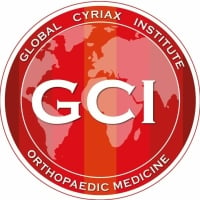
Injection with local anaesthetic
Injection with local anaesthetic
By Dr. Jan Claeys, M.D.
Indications of infiltration techniques with local anaesthetic
For injections and infiltrations lidocaine and procaine are used
Procaine
The anaesthetizing effect of procaine starts after 5-10 min. and lasts about 45 min. The maximal quantity should not exceed 50 ml in a 0.5 % concentration.
Procaine is used in concentrations of 0.5 % and 2 %.
Lidocaine
The anaesthetizing effect starts after 2 min. and lasts about 60 min.
Lidocaine is used in a 2 % concentration.
Procaine 0.5 % is used as a diagnostic aid, but also therapeutically in cases of chronic bursitis, muscle belly lesions and in epidural local anaesthesia.
Procaine 2 % is used to dissolve calcium deposits in tendons or bursae, and in case of a sinuvertebral nerve block.
Lidocaine 2 % without ADR is used as a diagnostic aid, and for superficial anaesthesia of the skin in epidural local anaesthesia.
When using local anaesthetics, both a toxic and an allergic reaction can occur.
- Toxic reaction
This reaction presents mainly when the maximal dose is exceeded or in intravenous application of the anaesthetic.
Either a stimulation or a depression of the central nervous system occurs, in conjunction or not with a cardiovascular suppression.
Next to an immediate reaction, also a delayed one is possible ; it occurs 5-30 min. after the injection. Therefore, after an epidural local anaesthesia, the patient must be kept under observation for another 30 min.
- Allergic reaction
Its frequency, when using procaine, is 1/50.000.
Besides the general urticarian reaction, a serious anaphylactic shock can occur, fortunately only very exceptionally with respiratory and cardiac arrest.
Next to an immediate reaction, also a delayed one is possible, as long as 30 min. after the application.
Previous interrogation of the patient as to the presence of an allergy can help avoiding allergic reactions ; in case of doubt, a small intradermal application can be considered.
